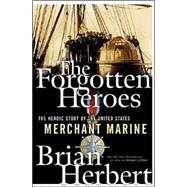
| Acknowledgments | p. 9 |
| Introduction | p. 11 |
| Dreams of Glory | p. 19 |
| All the Ships at Sea | p. 25 |
| Stormy Waters | p. 30 |
| Reporting for Duty | p. 43 |
| War Crimes | p. 54 |
| The Battle of Saipan | p. 64 |
| Valor at Sea | p. 73 |
| Torpedo Run | p. 79 |
| The Russian Gauntlet | p. 90 |
| The Submarine Parade | p. 101 |
| The Helping Hands | p. 106 |
| The Leaky Lifeboat | p. 122 |
| Passage to India | p. 126 |
| Invasion Forces | p. 137 |
| Hurricane at Sea | p. 148 |
| The Darkest Days | p. 157 |
| The Cigarette Salesman | p. 165 |
| Not Covered! | p. 171 |
| They Earned Our Respect | p. 179 |
| Last Man to Stand | p. 190 |
| The Quest for Justice | p. 198 |
| Man on a Mission | p. 209 |
| Healing the Wounds | p. 213 |
| Contact Information | p. 235 |
| Seamen of the American Revolution | p. 239 |
| Two Centuries of Service to America | p. 247 |
| Arthur Beaumont: "Artist Laureate" of the U.S. Navy | p. 261 |
| Endnotes | p. 265 |
| Bibliography | p. 295 |
| Index | p. 309 |
| Table of Contents provided by Ingram. All Rights Reserved. |
The New copy of this book will include any supplemental materials advertised. Please check the title of the book to determine if it should include any access cards, study guides, lab manuals, CDs, etc.
The Used, Rental and eBook copies of this book are not guaranteed to include any supplemental materials. Typically, only the book itself is included. This is true even if the title states it includes any access cards, study guides, lab manuals, CDs, etc.
Excerpted from The Forgotten Heroes: The Heroic Story of the United States Merchant Marine by Brian Herbert
All rights reserved by the original copyright owners. Excerpts are provided for display purposes only and may not be reproduced, reprinted or distributed without the written permission of the publisher.